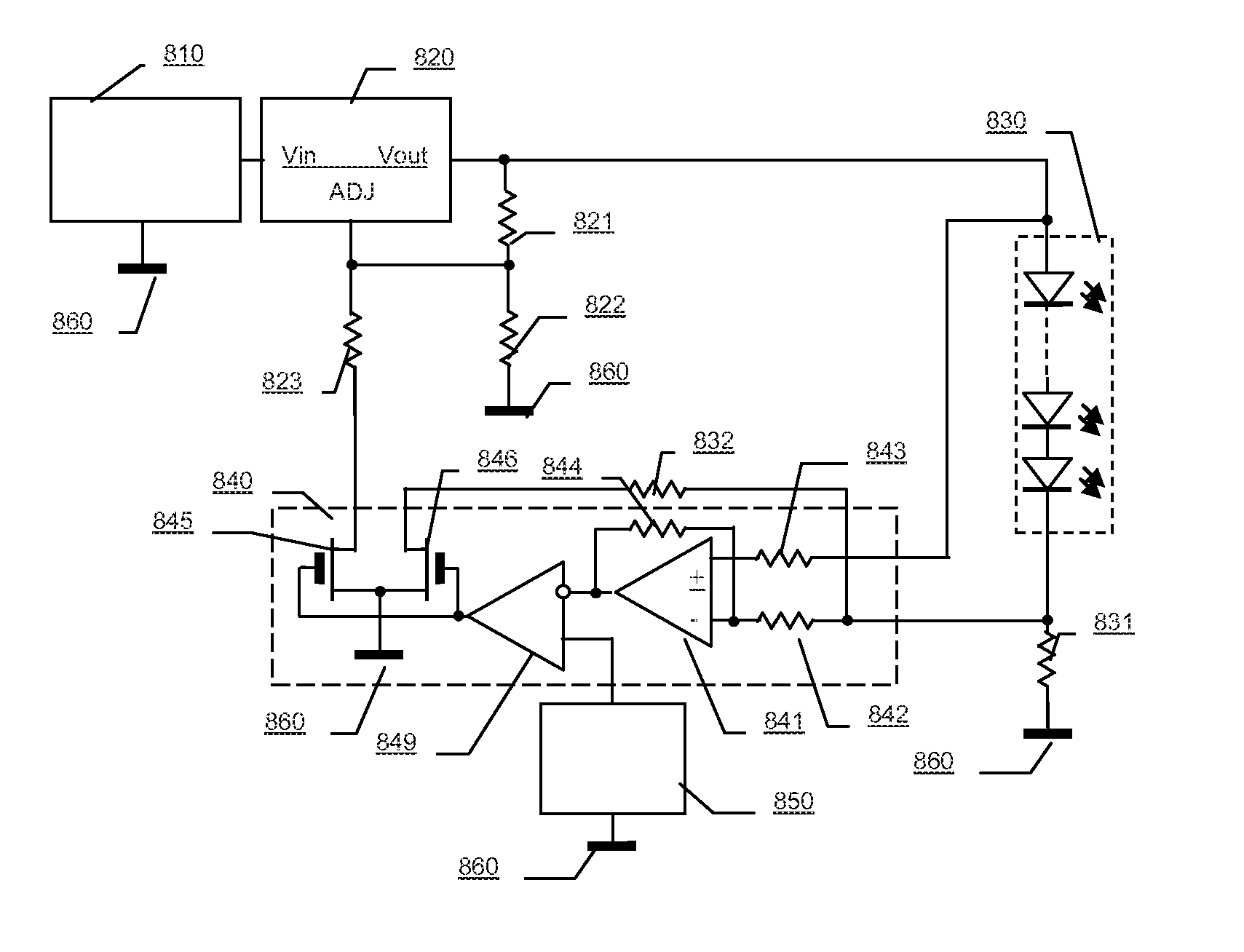Method and Apparatus for Precise Temperature Brightness Compensation of LED
a temperature brightness compensation and led technology, applied in the direction of electric variable regulation, process and machine control, instruments, etc., can solve the problems of reducing reliability, limiting the use of led in some applications, and adding external sensors and components, etc., to achieve the effect of simple design
- Summary
- Abstract
- Description
- Claims
- Application Information
AI Technical Summary
Benefits of technology
Problems solved by technology
Method used
Image
Examples
example 1
[0059]The experiment was conducted by the instrumentality measuring the system shown on FIG. 1A for temperature range from 0° C. to +40° C. with intervals of 5° C. This experimental data is presented in the Table 1. First, the brightness of LED type TLCY5100 was measured at temperature 20° C. and current 17 ma. This brightness value was taken as a reference and was used to compute relative brightness by dividing the brightness of the LED by the reference brightness. Next, relative brightness was measured in the specified temperature range using two power sources: a current power supply, and the aforesaid optimal supply. The data of the relative brightness of the LED with supply by current source 17 ma is presented in the second row of Table 1. This data show that in the temperature range from 0° C. to +40° C., the relative brightness of the LED varies in the range of ±20%. The data of relative brightness of the LED with supply by the optimal voltage source 2.16 V and through the opt...
example 2
[0063]The Experiment was Conducted by the instrumentality measuring the system shown on FIG. 1A for temperature range from 0° C. to +40° C. with intervals of 5° C. This experimental data is presented in the Table 2. First, the brightness of LED type HB5-439AWD was measured at temperature 20° C. and current 17 ma. This brightness value was taken as a reference and was used to compute relative brightness by dividing the brightness of the LED by the reference brightness. Next, relative brightness was measured in the specified temperature range using two power sources: a current power supply, and the aforesaid optimal supply. The data of the relative brightness of the LED with supply by current source 17 ma is presented in the second row of Table 2. This data show that in the temperature range from 0° C. to +40° C., the relative brightness of the LED varies in the range of ±8%. The data of relative brightness of the LED with supply by the optimal voltage source 3.51 V and through the op...
PUM
 Login to View More
Login to View More Abstract
Description
Claims
Application Information
 Login to View More
Login to View More - R&D
- Intellectual Property
- Life Sciences
- Materials
- Tech Scout
- Unparalleled Data Quality
- Higher Quality Content
- 60% Fewer Hallucinations
Browse by: Latest US Patents, China's latest patents, Technical Efficacy Thesaurus, Application Domain, Technology Topic, Popular Technical Reports.
© 2025 PatSnap. All rights reserved.Legal|Privacy policy|Modern Slavery Act Transparency Statement|Sitemap|About US| Contact US: help@patsnap.com



